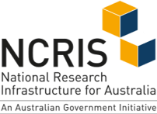People with pain rely heavily on opioid medications, causing side effects and leading to addiction in as many as 18 million people around the world each year.
Queensland drug discovery company Vast Bioscience is gaining a greater understanding of genetic, nerve and cell mechanisms involved in pain while developing a non-opioid therapeutic that will not cause addiction.
Pain is a signal in a person’s nervous system, felt as anything from a tingle to a sting or a burn, and is among the most common reasons for people to seek medical help.
Opioids have long been a primary source of pain relief, targeting proteins on the surface of cells in the central nervous system called opioid receptors, in turn producing morphine-like effects.
While being effective, opioids have significant side effects such as respiratory depression, a breathing disorder known to cause slow and ineffective breathing. Opioids can also cause addiction and lead to death by overdose.
Increased prescription has led to the development of an opioid crisis, with more than 45,000 deaths from overdose each year in the US alone. Around the world, more than 300 million surgeries are performed each year, with about 6 per cent of patients becoming addicted.
Research is progressing on finding alternatives that target other proteins, such as sodium ion channels that activate and spread pain signals in the nerve cell and cause the pain sensation. Ion channels are proteins transporting ions into or out of the cell, needed for nerve cell communication, electrical impulses and muscle contraction.
Experiments have confirmed that the sodium ion channel subtype hNav1.8 has a key role in pain signalling and is a prime target for new analgesics and therapeutics to treat chronic pain. The key challenge when developing therapeutics is to ensure they block hNav1.8 without also impacting the work of other ion channels, so that severe side effects are avoided.
Vast Bioscience has developed therapeutic candidates with complex 3D shapes that have accurately targeted hNav1.8 in the laboratory. They have used TIA support and facilities to study, refine and shortlist therapeutic candidates, as well as MTPConnect’s Biomedical Translation Bridge program for assistance through to the proof-of-concept stage.

Chief Scientific Officer Dr Wim Meutermans says the initial focus is on alleviating post-surgical pain, but the team’s work also covers pain from inflammation, osteoarthritis and nerve damage.
Vast Bioscience has used the Centre for Drug Candidate Optimisation (CDCO) at Monash University as part of TIA’s Pipeline Accelerator scheme.
The work at CDCO evaluates whether candidates can enter the blood stream, are stable and well distributed to reach the target, and relieve pain in animal models.
“Opioids are the standard of care but they have limited efficacy and significant liabilities, specifically addiction, side effects and people gradually needing higher doses for the same benefit,” Dr Meutermans says.
“Our therapeutic is not expected to have those liabilities – and is expected to have a significant impact on treating severe acute and chronic pain without the often lethal consequences of opioid addiction.”

